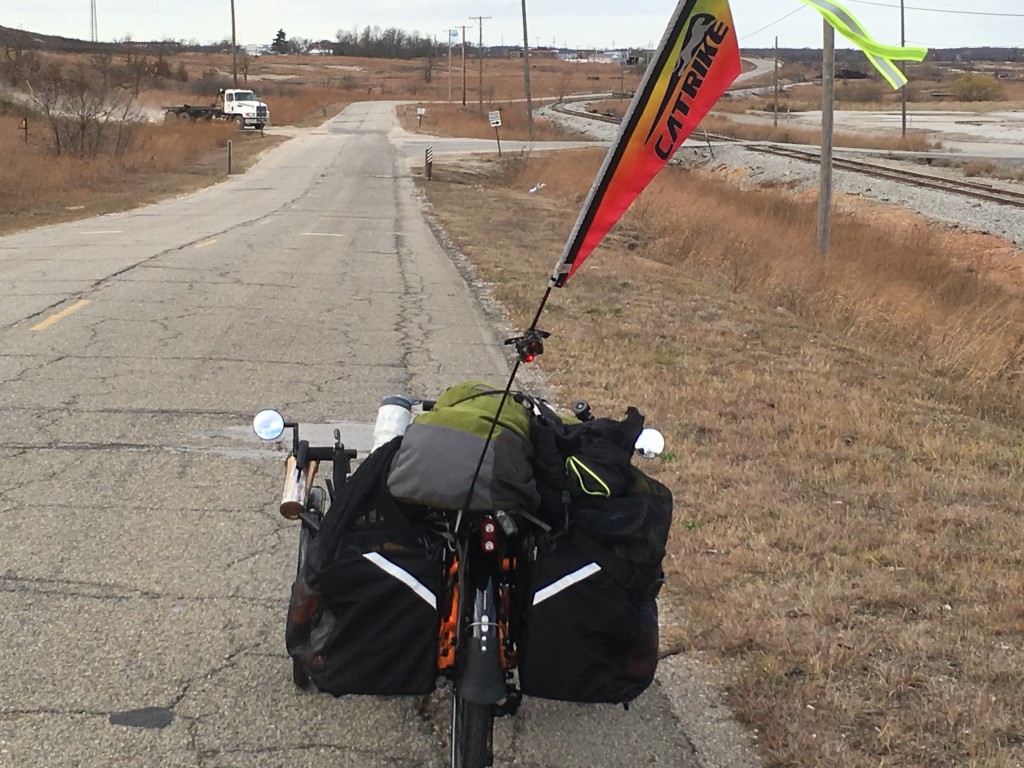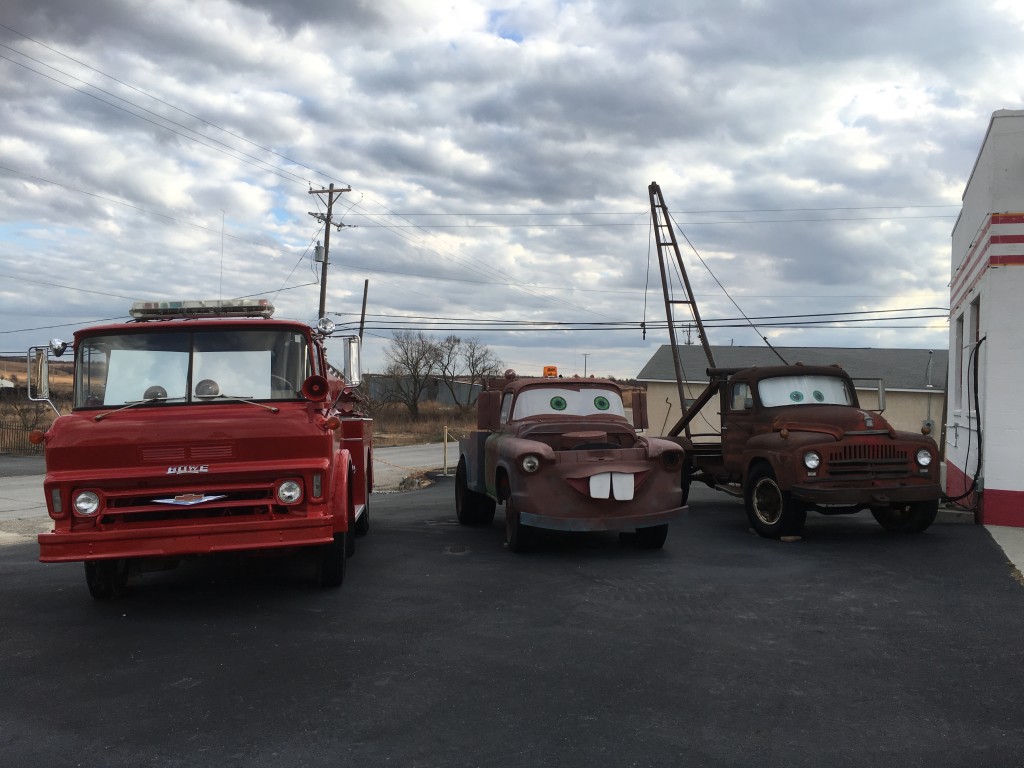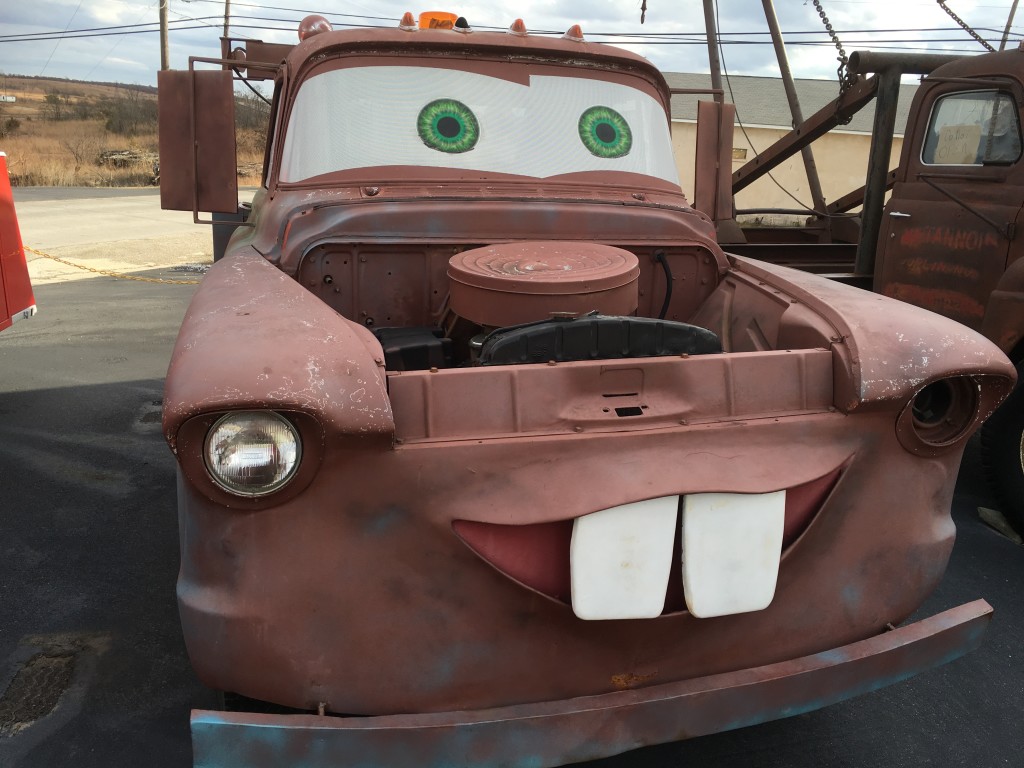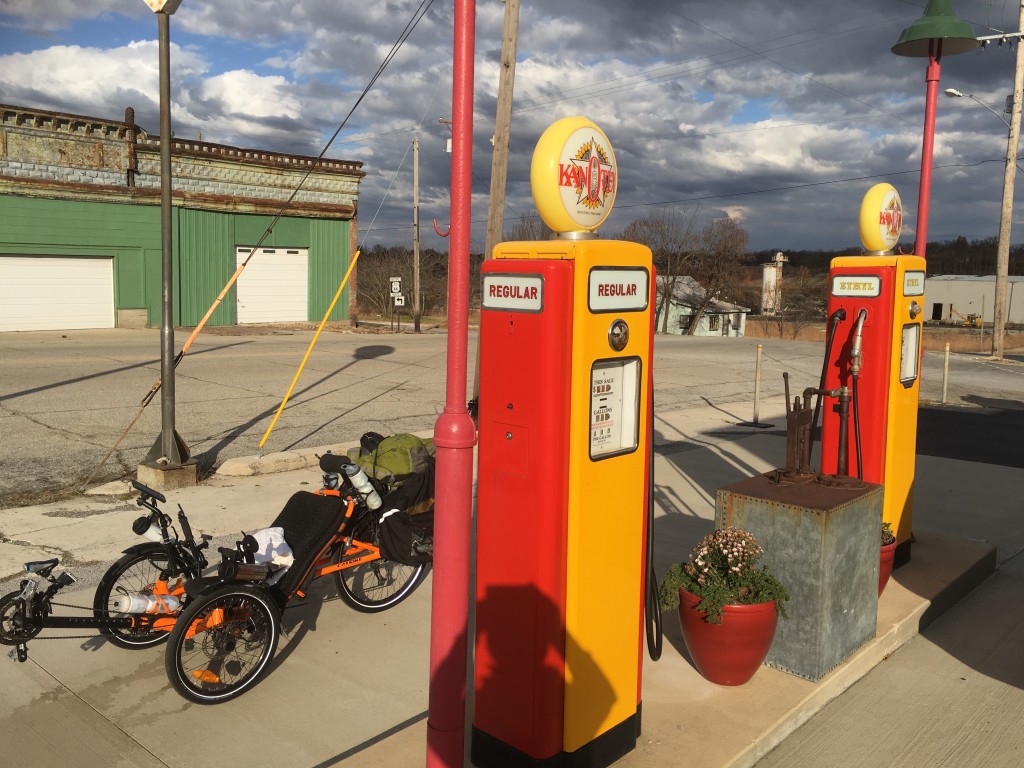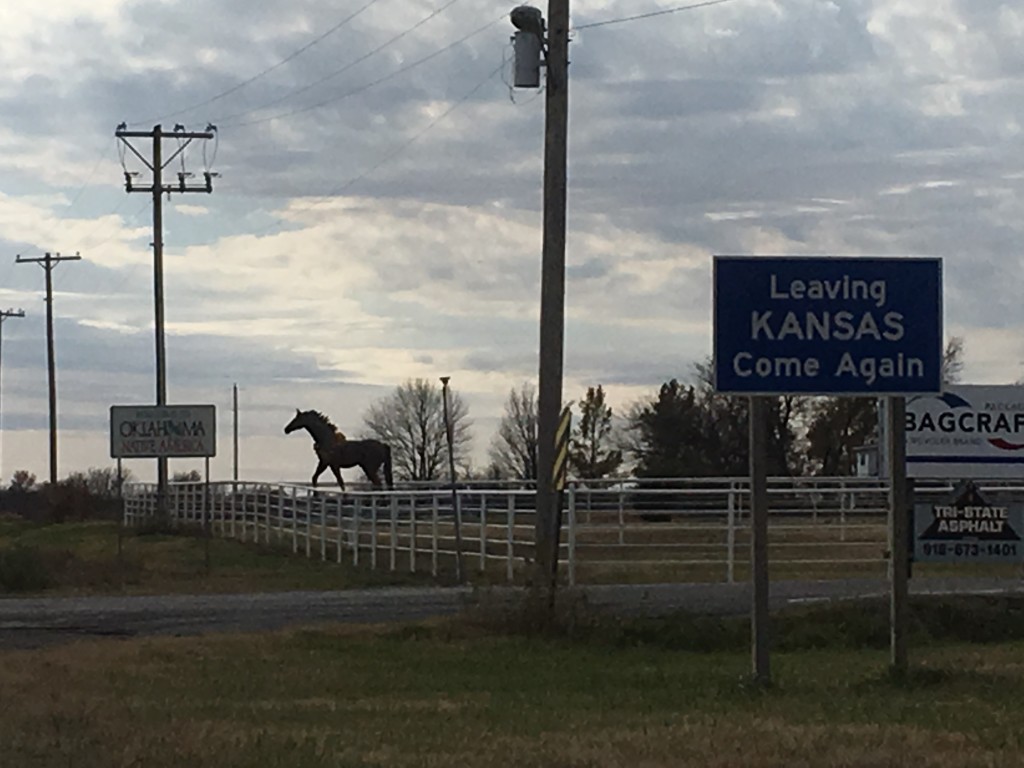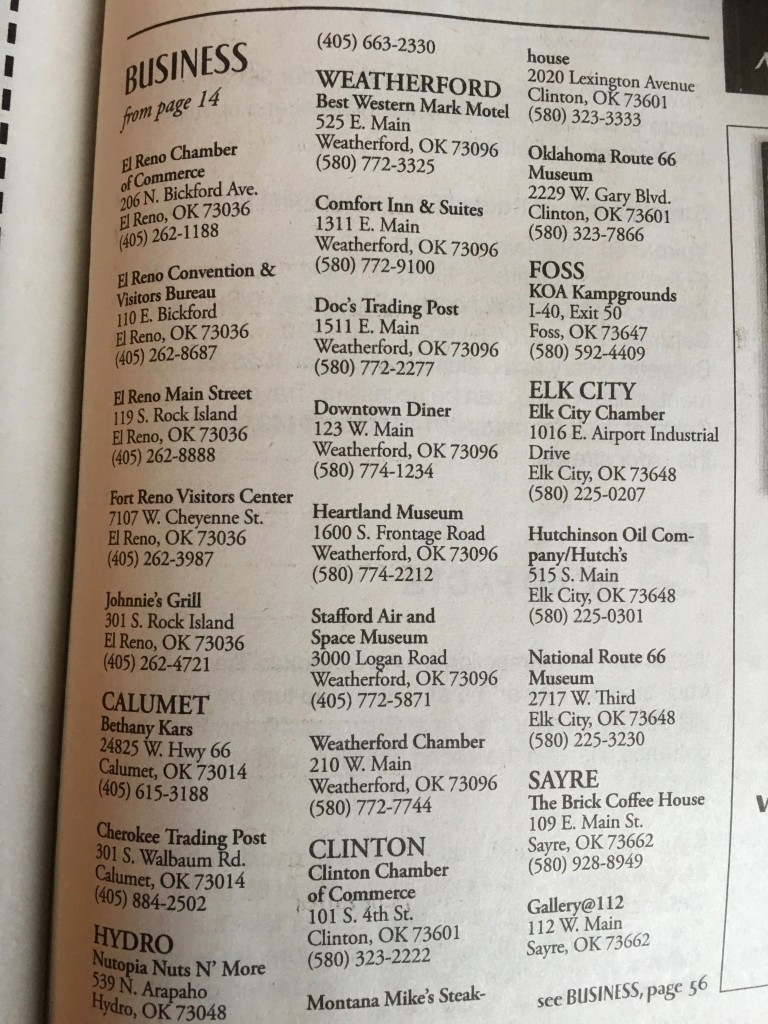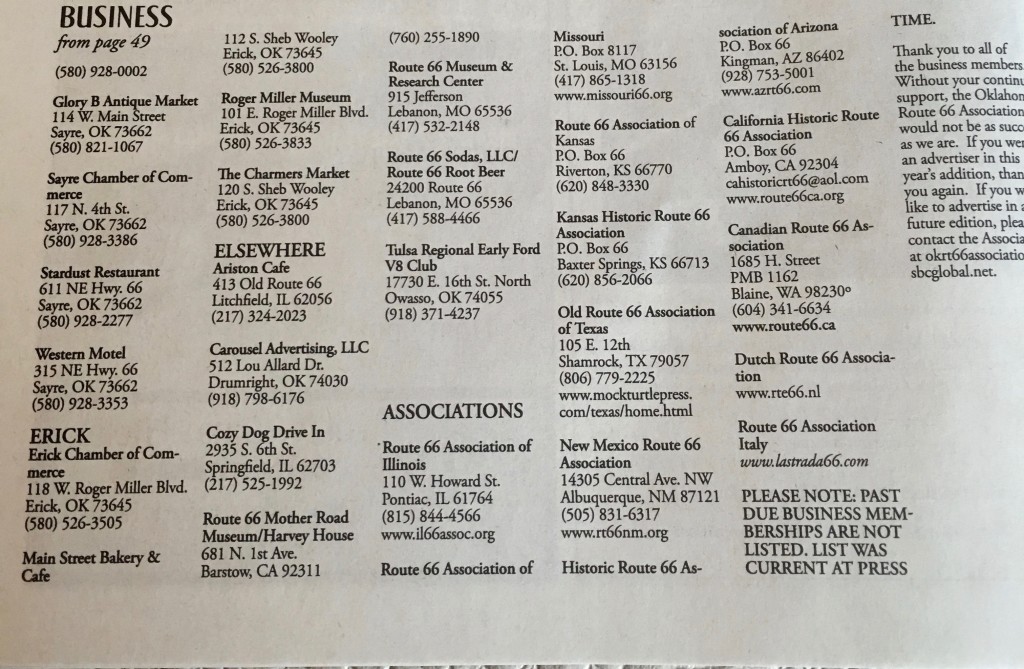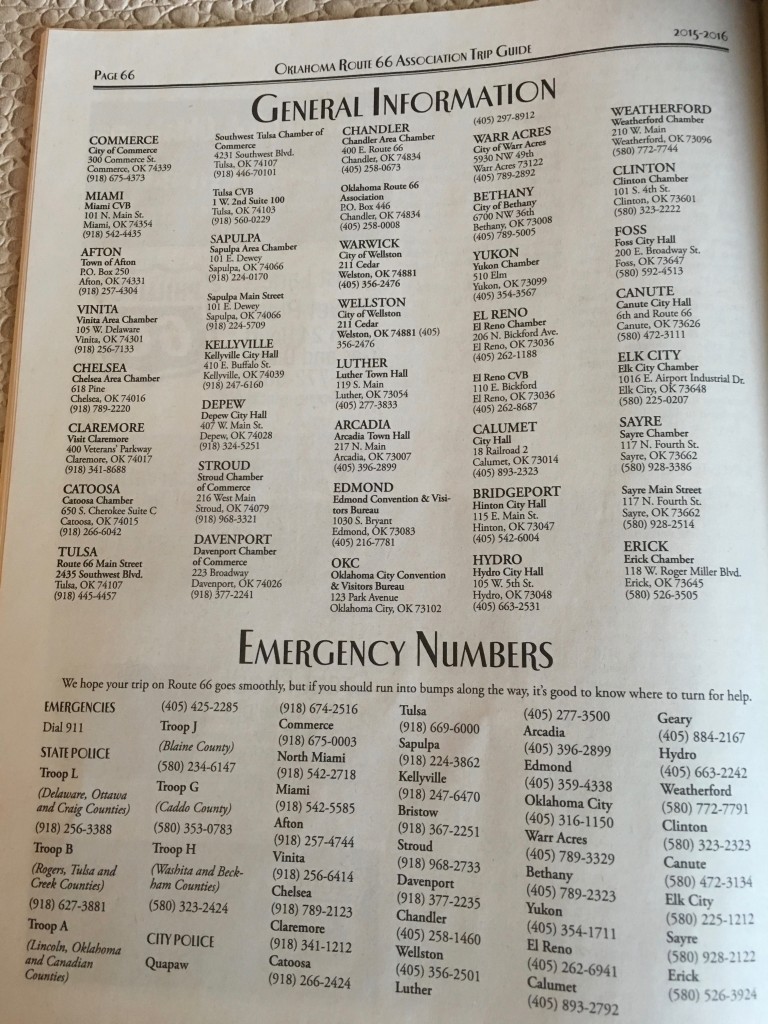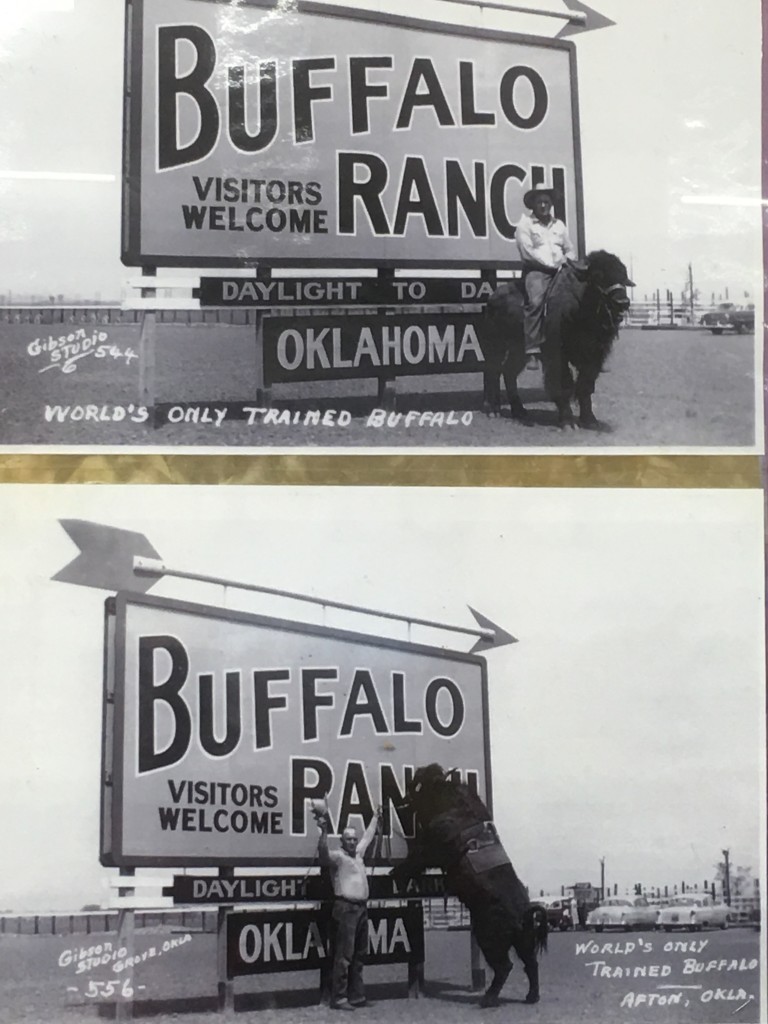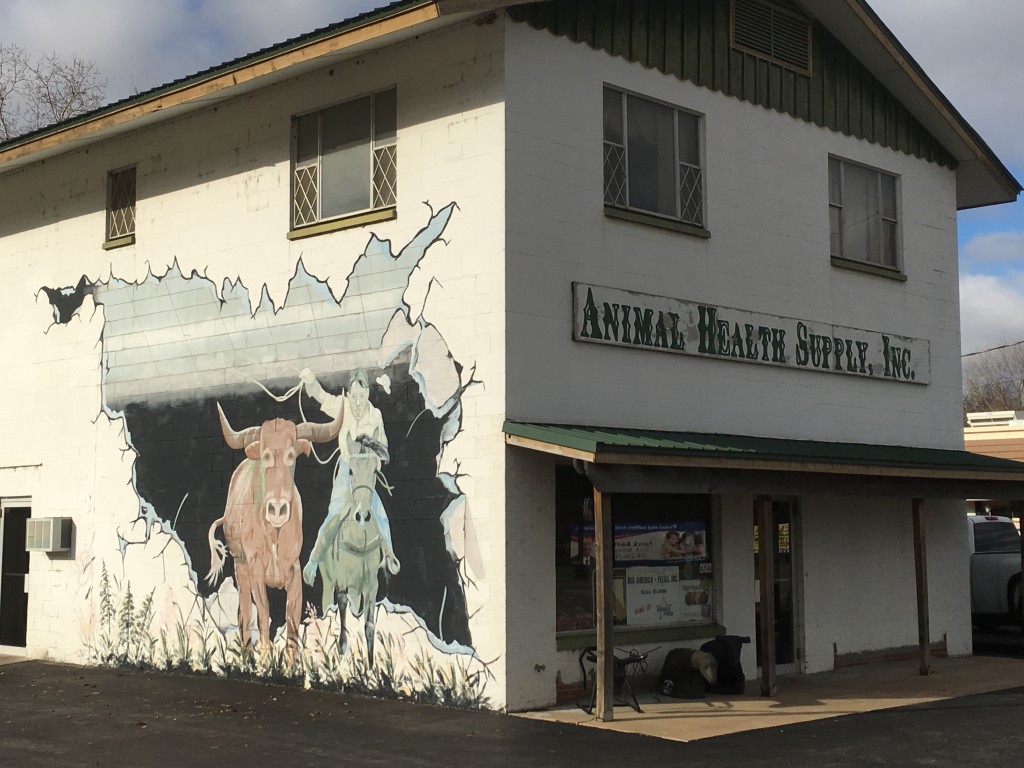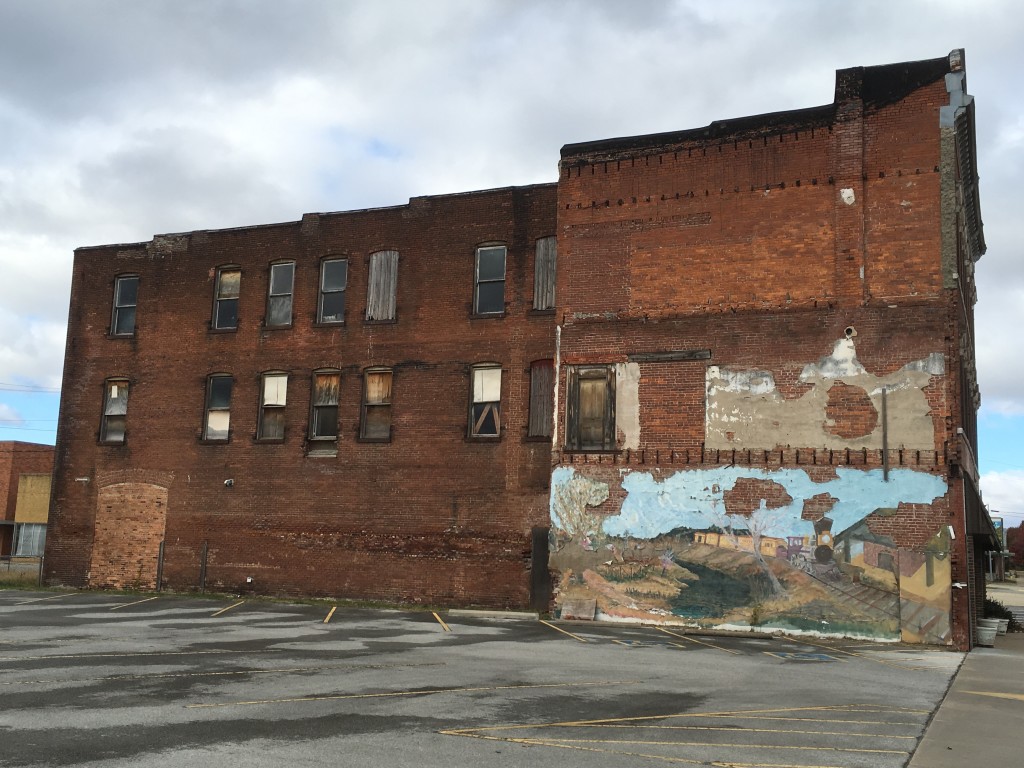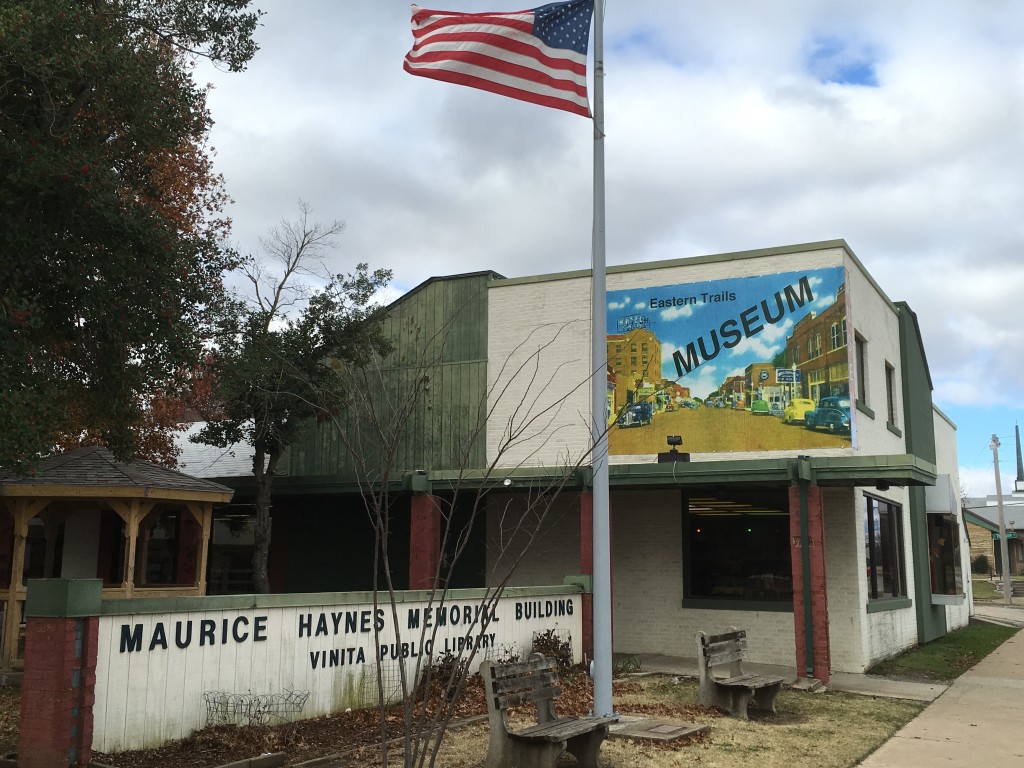Total miles 61.46
(But it felt like 100, because of strong, cold winds)
Joplin, Missouri

Launching the Orange Flash in Joplin. There were a lot of bags to parse, gather, and somehow attach. (It makes a big difference when I don’t have my support crew of wife Carol and the Smartest Dog in the World). I later weighed all the stuff I took: 60 pounds, not including the bike itself, which is probably about another 40, making a total of 100 pounds).
Galena, Kansas
Entry into Kansas traverses old railroad yards and factories.
The town has a restored gas station.
Baxter Springs, Kansas
Baxter Springs claims it is the birthplace of waterjet cutting. (Sorry I missed seeing any evidence of it).
Don’t see “soda fountains” much any more.
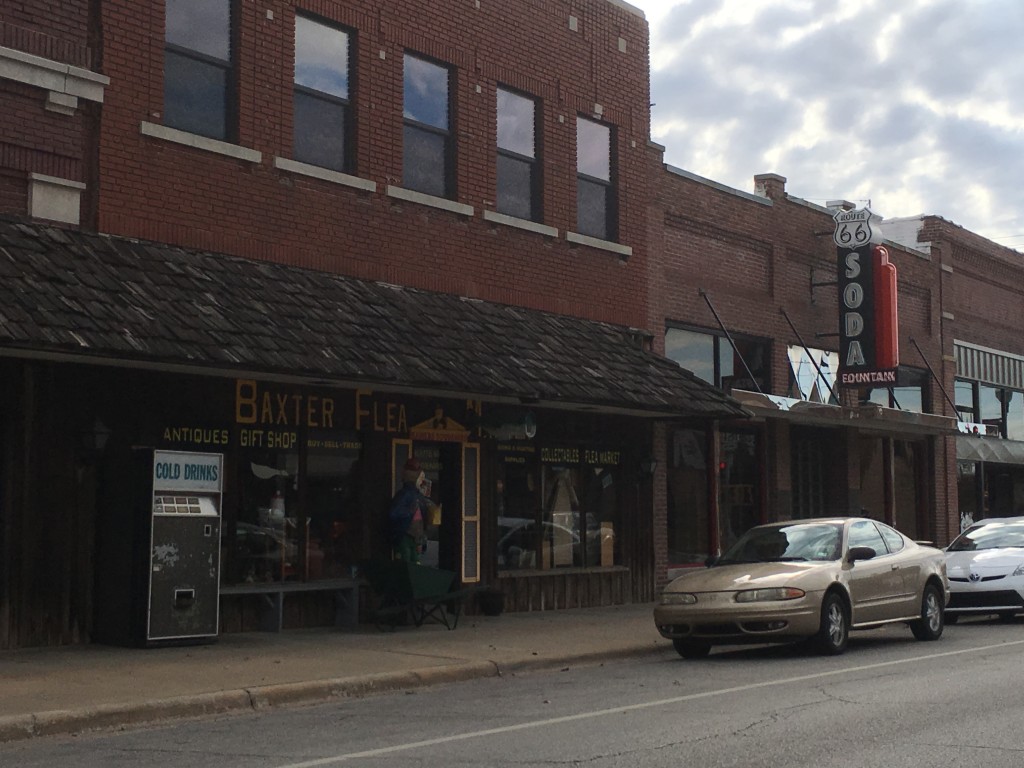
Almost every town along old Route 66 has collectable shops selling all manner of memorabilia.

Below is an old, roadside cemetery. One wonders the stories of the lives represented here, especially given the very different era in which they encompassed the universal birth-to-death journey. Sadly, most or all of that history is likely lost to the sands of time.
Route 66 only spans about 12 miles in Kansas, so soon after leaving Joplin MO one enters a third state, Oklahoma (where one will be biking for days and days).
Oklahoma
The state publishes a very useful Route 66 guide, freely available at hotels and gas stations:
Quapaw
Commerce OK
This is ‘holy ground’ to all 1950-era baseball fans as it is the birthplace of famed Mickey Mantle, #7 of the Yankees, sometimes referred to as the Commerce Comet both for this blazing talents as well as his great speed.
Mickey Mantle’s numbers for 1956 were: 353 batting average, 52 home runs, and 130 RBIs (and, alas, 99 strikeouts) for which he won the Triple Crown and MVP (and of course the Yankees won the World Series); and, oh by the way, he was an outstanding centerfielder. Has anyone ever had a better (baseball) year? (Sadly, though, his personal life descended into a bad place, likely due to the influence of Billy Martin; but sportscaster Bob Costas, a huge Mantle fan, noted upon Mickey’s death, that he had some great ‘extra innings’ at the end of his life).
Of course he is in baseball’s Hall of Fame (image courtesy of Wikipedia):
Miami OK
South of Miami is the first of two stretches of the old old, truly original, Route 66, that actually can still drive on. It is affectionally called the Ribbon Road because it was only 9 feet wide, for both lanes, including real curbs on both sides. Those white boundaries are not paint, but the remnant of the original curbs.
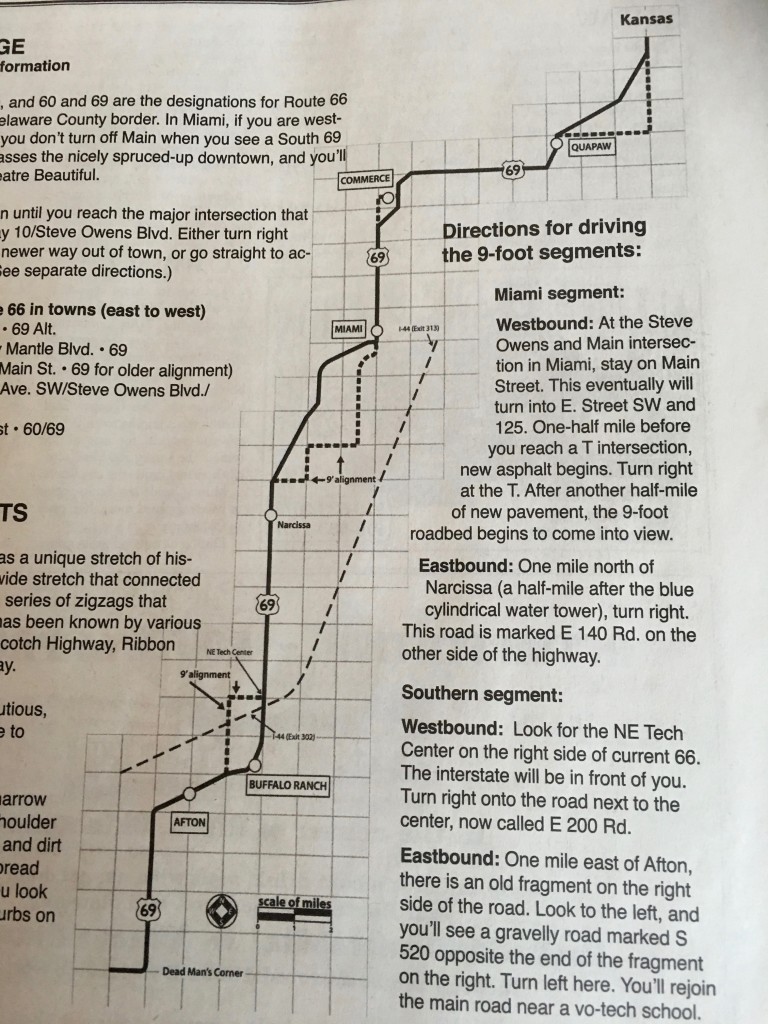
Buffalo Ranch
Today Buffalo Ranch is a deluxe car/truck stop with a store and a Subway. It still has buffalo including a newborn. But it used to have a trained buffalo:
Afton
Vinita
Very very happy to see my motel. Darkness had fallen about an hour earlier, making it hard to see and keep on the narrow berm on the way into Vinita. And there were two steep climbs where my Google directions noted that it had converted my “driving” directions to “walking” directions, given my 3 mph uphill speed.
The overnight low was near freezing, with rain and even some reported snow flurries, and a north wind of 24 mph at 37 F. So, instead of biking, I’m touring the town, including getting a “cowboy haircut,” waiting for a better day.
You learn a lot in a local barber shop, e.g.: (1) squirrel hunting is now in season in OK; folks like to fry squirrel brains and blend it with eggs in the morning, and (2) the local famous eatery, Claytons, is known for its chicken fried steak but their speciality is “calf fry,” which is, to put it bluntly as the barber did to me, “bull’s nuts,” deep fried. (Planning on passing on both). Here’s more on the latter:
“Rocky Mountain oysters, mountain oysters, prairie oysters, Montana tendergroin or swinging sirloin are North American culinary names given to buffalo, boar or bull testicles. They are usually peeled, coated in flour, pepper and salt, sometimes pounded flat, then deep-fried.
It is a well-known novelty dish in parts of the American West and the Canadian Prairies where cattle ranching is prevalent. The name is derived from the Rocky Mountains. In Oklahoma and North Texas, they are sometimes called calf fries but only if taken from very young bulls. In many parts of Mexico they are referred to as “criadillas” and are colloquially referred to as huevos del toro (literally, “bull’s eggs” but huevos is also a Spanish slang term for testicles) in Central and South America. Rocky Mountain oysters are sometimes confused with lamb fries or animelles (lamb testicles), which are served in a manner similar to Rocky Mountain oysters. Boar (hog) testicles are served in some Midwest areas such as in Illinois, Indiana, and Iowa. In other countries, testicles are known as sweet meats.”
Source: http://www.barrypopik.com/index.php/texas/entry/calf_fries/
Front view of large, prominent building built in 1884 (in stone at the top), which would have been very impressive in that day.

Below is the rear of the above building. That bricked-in opening at the left could have been for a horse-drawn stagecoach, given that in 1884 on street car parking was not yet with us.
Some links on the history of Vinita OK: (Who knew that Dr. Phil is from Vinita).
http://www.legendsofamerica.com/ok-vinita.html
http://www.oklahomagenealogy.com/craig/
http://www.okhistory.org/publications/enc/entry.php?entry=VI009
Day 2 is here:


